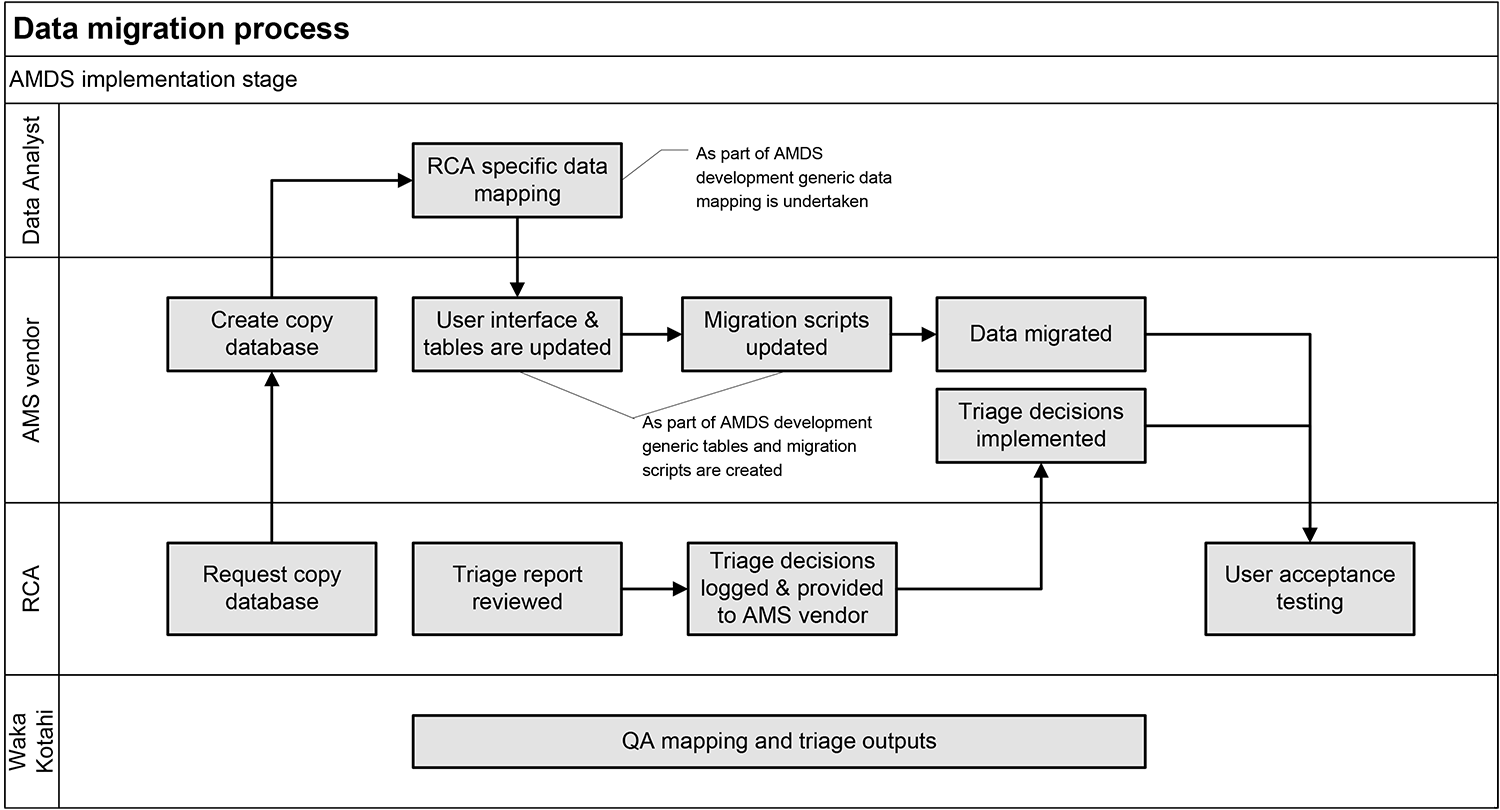AMDS data migration is the process that maps, transforms and transitions data within a Road Controlling Authority’s (RCAs) asset management system (AMS). It is one of the key activities of the Asset Management Data Standard (AMDS) implementation.
This page provides a high-level description of the process an RCA goes through with NZTA (including any third parties/vendors) with the implementation of the AMDS into their organisation.
Data migration principles
- AMDS applies to new and existing assets.
- No data is lost, unless a decision is made that the data is not needed.
- The process does not guess, assume, or estimate data mapping for new attributes. If there is no clear source of data, it will be left empty (NULL), False or a nominal value will be applied so non-conforming data can be identified.
- There is no requirement to collect or populate missing mandatory data as part of this project.
- Missing mandatory data can be populated when assets are maintained, or new assets are created.
- If a list value has no logical AMDS replacement, it will be moved across as is. The value will not be available for new assets.
The data migration process
The data migration process includes the following steps:
- Creating a copy of your asset management system (AMS) database.
- Analysing and updating generic data mapping to reflect your organisation.
- Your AMS vendor will use the updated data mapping to update and/or develop data migration scripts.
- Undertaking a data triage activity to review data that is not required by your AMS or the AMDS.
- Recording your triage decisions and providing to your AMS vendor.
- The AMDS team and your AMS vendor will confirm the data migration approach and timeframe with you.
- As part of data migration, your AMS vendor will update tables, business rules and the user interface.
- Undertaking use acceptance testing (UAT) and post migration spot checks.
Throughout this process we undertake quality assurance activities to ensure the quality of your AMDS implementation.

View larger image [PDF, 174 KB]
Resources we provide to Road Controlling Authorities (RCAs)
- A master mapping document: We provide you with generic data mapping. This is updated based on information from each AMDS implementation.
- Triage reports: To help identify fields in the RCA database that are not required by AMDS, and if these fields are populated with data.
- Data triage decision register: A spreadsheet to record your triage decisions.
- Data quality assurance (DQA) reports: After the AMDS has been implemented into the RCA, to show data that does not conform with AMDS.
AMDS master mapping document [XLSX, 277 KB]
Conforming to AMDS
After RCAs have completed a data migration and triage exercise to migrate data to the AMDS tables in the asset management system, we undertake a quality check and confirm that the RCAs data conforms to the AMDS.
User defined tables (UDTs) can still be created within a RCAs asset management system for data that is not part of AMDS.
AMDS tables within a RCAs asset management system can only be edited by the vendor. However, individual RCAs can increase the obligation level from Optional to Mandatory to suit their needs. This is on a User Interface (UI) basis. The obligation level for Mandatory and Conditional Mandatory cannot be adjusted.
AMDS implementation
